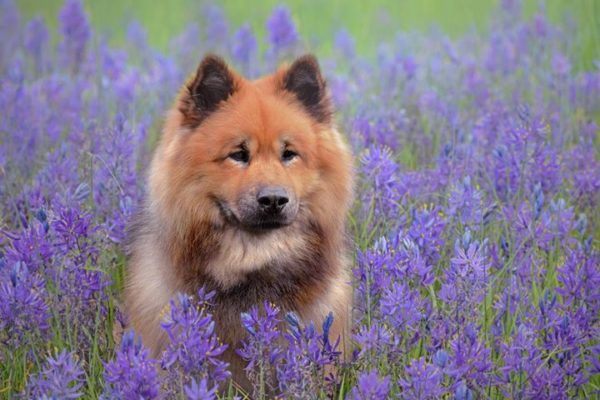
The Eurasier‘s story began in the late 1950s and early 1960 when German dog owner, Julius Wipfel, set out to develop breed that would command the respect of a wolf, but be a calm, family-oriented dog. He had always been a big dog lover, and was particularly fascinated by Nordic sled dogs from an early age, so this new breed would be a Spitz-type dog. It should be adaptable, beautiful, even-tempered, and intelligent, and to that end, Wipfel founded the “Kynologische Zuchtgemeinschaft fuer Wolf-Chow-Polarhunde” in 1961 which loosely translates to: “Canine Breeding Association for Wolf-Chow-Northern Dogs.” He and other dog enthusiasts started with four Wolfspitz females and three Chow-Chow males, the plan to systematically breed the seven dogs with each other. The resulting puppies were called “wolf-chows.” By 1966, Wipfel had officially registered the organization with the German government and developed the first official written standard. In 1972, the Samoyed was added to the gene pool for the Sammy’s friendly nature.
Fast forward to 1973 when the German Kennel Club and the FCI acknowledged the breed. The name, Wolf-Chow, however, had to be changed since the VDH (German Kennel Club) didn’t allow existing breed names to be part of a new breed name (and official representatives of the Chow-Chow and Wolfspitz breed clubs complained). The breed was renamed the “Eurasier” to reflect its European and Asian heritage, and the breed standard was rewritten in 1994.
The Eurasian was officially accepted by the Canadian Kennel Club in 1995, the United Kennel Club in 1996, and, to repeat, the FCI in 1973. In 2008, the AKC officially entered the breed into its Foundation Stock Service, and if the breed meets criteria, in time it will be moved into the Miscellaneous Class, and eventually into the Non-Sporting Group. It’s thought that there are now around 8,500 Eurasiers globally, most of them in Europe, and primarily in Germany, but this number is likely to grow as more people become aware of the attributes of this reserved, but good natured and curious dog utterly devoted to its people.
Three paragraphs do not do justice to the breed’s history, and we encourage you to read a far more detailed account on the breed club’s website.
Image by Marissa Armstrong
